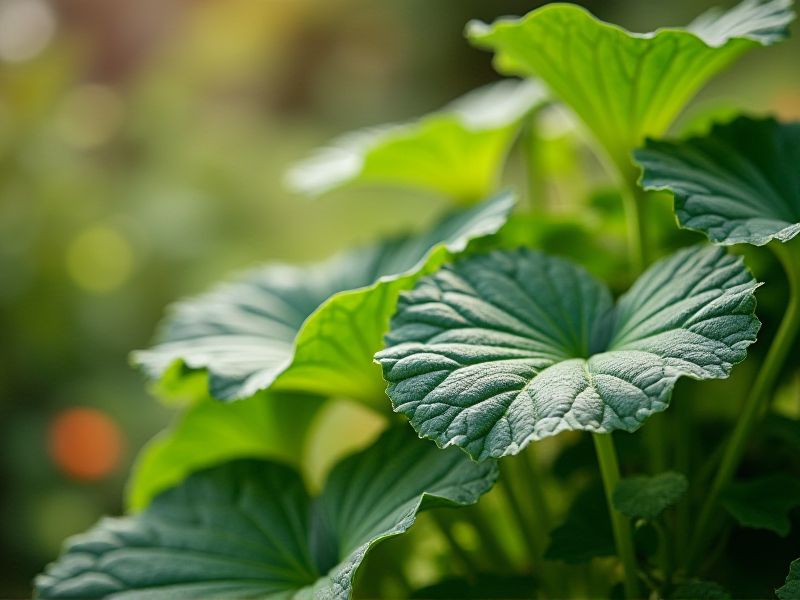
Shade plants that resist drought are ideal for enhancing gardens while conserving water. Species such as Helleborus, often known as Lenten rose, thrive in low-light areas and have excellent drought tolerance once established. Hostas, with their lush foliage and diverse colors, also adapt well in shaded environments and can withstand dry spells with minimal care. Ferns, including the Ostrich fern, add texture and can survive in moisture-retentive soils, making them perfect for shaded, dry spots. Choosing these resilient plants not only beautifies your landscape but also supports sustainable gardening practices.
List of some Shade plants that resist drought
- Cast Iron Plant (Aspidistra elatior)
- Japanese Painted Fern (Athyrium niponicum)
- Hosta (Hosta spp.)
- Lenten Rose (Helleborus orientalis)
- Bergenia (Bergenia spp.)
- Lungwort (Pulmonaria spp.)
- Epimedium (Epimedium spp.)
- Creeping Lilyturf (Liriope spicata)
- Coral Bells (Heuchera spp.)
- Lady's Mantle (Alchemilla mollis)
Important things about Shade plants that resist drought
Low Water Requirements
Shade plants that resist drought effectively thrive in low water conditions, making them ideal for gardens prioritizing sustainability. Species such as Helleborus and Epimedium are excellent choices, showcasing resilience while enhancing shaded areas with vibrant foliage and blooms. These plants not only conserve water but also attract beneficial pollinators, contributing to a healthy ecosystem. By incorporating drought-resistant shade plants into your landscape, you can reduce water usage while creating a lush, visually appealing environment.
Deep Root Systems
Shade plants with deep root systems, such as aspen and oak, can effectively resist drought conditions by accessing moisture stored deeper underground. These resilient species adapt to low-light environments while maintaining their water intake, making them ideal for challenging climates. By developing extensive root networks, they not only secure hydration but also contribute to soil stability and reduce erosion. Incorporating these plants into your landscape can enhance biodiversity and improve overall ecosystem health while providing important shade areas.
Adaptability To Shaded Environments
Shade plants that resist drought are essential for creating resilient gardens in low-light areas. Varieties like Helleborus, also known as Lenten rose, exhibit remarkable drought tolerance while thriving in partial to full shade. Ferns such as the Japanese painted fern not only add texture to your landscape but also adapt well to dry soil conditions under tree canopies. Incorporating these plants into your garden will help maintain lush greenery even in challenging, low-light, and drought-prone environments.
Tolerance To Heat
Shade plants that exhibit heat tolerance are essential for maintaining an attractive garden in warmer climates. These resilient species, such as Astilbe and Hosta, thrive in low-light conditions while withstanding the stresses of drought. By opting for these hardy plants, you can enhance your landscape's aesthetic appeal while conserving water resources. Incorporating heat-tolerant shade plants not only beautifies your environment but also promotes sustainable gardening practices.
Types Of Drought-Resistant Shade Plants
Drought-resistant shade plants such as hostas, ferns, and sedges are ideal for creating a lush, green landscape while conserving water. species like the Japanese painted fern (Athyrium niponicum) thrive in shaded areas and require minimal irrigation once established. You can also consider incorporating low-maintenance plants like the dryopteris fern, which thrives in low-light conditions and tolerates dry spells. These resilient plants not only withstand drought but also add texture and color to your garden, making them perfect choices for shaded areas.
Soil Moisture Retention
Shade plants that resist drought play a crucial role in enhancing soil moisture retention, particularly in challenging environments. These plants, such as ferns, astilbes, and hostas, have adapted to thrive in low-light conditions while utilizing their deep-root systems to access water stored below the surface. Their broad leaves and dense foliage not only provide necessary shade but also reduce evaporation, further preserving soil moisture. By incorporating these resilient species into your garden, you can create a lush, sustainable landscape that minimizes the need for irrigation even during prolonged dry spells.
Seasonal Foliage Changes
Shade plants, such as hostas and ferns, thrive in low-light environments while resisting drought conditions effectively. Their broad leaves capture available moisture, allowing them to survive prolonged dry spells, making them ideal for shaded garden areas. Varieties like astilbe and lungwort not only offer resilience but also contribute vibrant colors and textures to your landscape. Incorporating these drought-resistant shade plants can enhance both the beauty and sustainability of your outdoor space.
Pest And Disease Resistance
Shade plants such as ferns, hostas, and astilbes are not only celebrated for their aesthetic appeal but also for their innate resistance to pests and diseases. These resilient species thrive in low-light conditions, enabling them to conserve water efficiently and withstand drought periods with minimal stress. As you cultivate your garden, consider incorporating shade plants with specific traits like thick foliage or native origin, which often enhance their immunity to common garden pests such as aphids and slugs. Additionally, these plants play a crucial role in preventing soil erosion, further supporting a balanced ecosystem in shaded areas.
Native Plant Options
When selecting native plants for shaded areas in drought-prone gardens, consider species such as the Eastern Red Columbine (*Aquilegia canadensis*), which thrives in low-light environments while attracting pollinators with its vibrant red flowers. Another excellent choice is the Wild Ginger (*Asarum canadense*), known for its heart-shaped leaves and ability to create lush ground cover without needing excessive water. The Deer Tongue Grass (*Dichanthelium clandestinum*) not only provides attractive foliage but also tolerates drought conditions once established, making it ideal for low-maintenance landscapes. Incorporating these native plants enhances biodiversity, supports local ecosystems, and requires less water, creating a sustainable and beautiful shaded garden space.
Maintenance Needs
Shade plants that resist drought are essential for creating a lush garden while conserving water. Varieties such as Hosta, Ferns, and Lamium thrive in low-light conditions and have adapted to survive with minimal moisture. Proper care involves mulching to retain soil moisture and regular pruning to promote air circulation, which helps prevent fungal diseases. Selecting native drought-resistant species not only enhances your garden's aesthetic but also supports local ecosystems and biodiversity.
